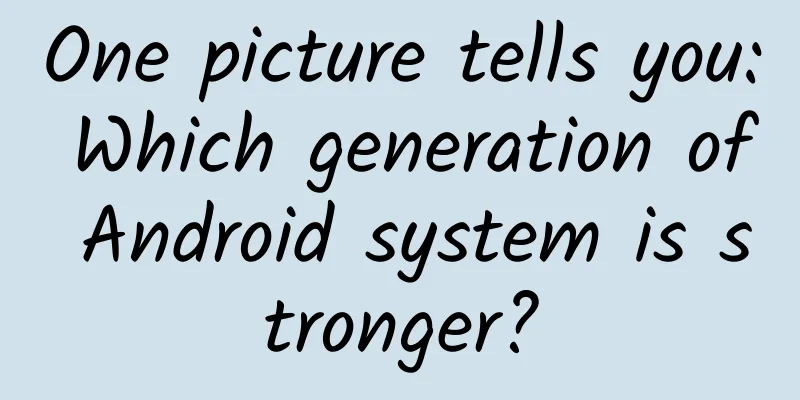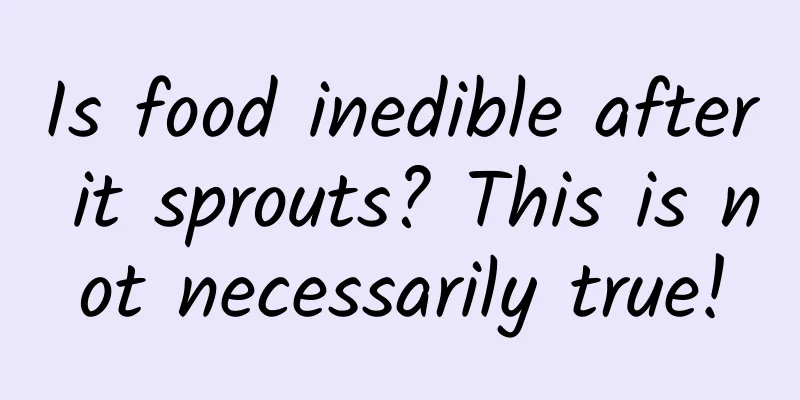One picture tells you: Which generation of Android system is stronger?

|
When Google released Android 1.5, it started naming it after desserts, and the size of the desserts that represented each version became larger and larger. Google released Android 5.0 Lollipop in mid-October 2014. As of early January 2015, it has been more than a month since the release of Lollipop. How is the performance now? According to Google's official data, as of early January 2015, there are almost no people using Lollipop. It has almost no market share among all Android devices, with a market share of less than 0.1%, as shown in the figure below, which is so small that it is almost invisible. One picture tells you: Which generation of Android system is stronger? Currently, most users still use the Android Jelly Bean system, which has a total market share of 46%, of which Android 4.1 accounts for 19.2%, 4.2 accounts for 20.3%, and 4.3 accounts for 6.5%. The second place is the previous version of "Lollipop", namely Android 4.4 KitKat (KitKat Chocolate), with a market share of 39.1%. It is worth mentioning that 4.4 successfully broke through the 1.1% share within one month after its official release. The market shares of the remaining Android versions are: Android 2.3 Gingerbread (7.8%), Android 4.0 Ice Cream Sandwich (6.7%), and Android 2.2/2.2.1 Froyo (0.4%). This also shows that Android is still facing the problem of version fragmentation, with multiple versions of the Android system being used by users at the same time. Although Google announced the developer preview version of Lollipop at the I/O Developer Conference on June 26 last year, companies such as Samsung, Motorola and LG have launched flagship models equipped with the Android 5.0 system, but the lagging system updates of other manufacturers have resulted in the "Lollipop" system being far from popular enough. For those who use Android, which system version are you using now? Attached are the names and release dates of several Android versions: Android 1.5 Cupcake 2009.4.30 Android 1.6 Donut (Donut) 2009.9.15 Android 2.0/2.0.1/2.1 Eclair (Muffin) 2009.10.26 Android 2.2/2.2.1 Froyo (frozen yogurt) 2010.5.20 Android 2.3 Gingerbread (Gingerbread) 2010.12.7 Android 3.0 Honeycomb 2011.2.2 Android 3.1 Honeycomb 2011.5.11 Android 3.2 Honeycomb 2011.7.13 Android 4.0 Ice Cream Sandwich (Ice Cream Sandwich) 2011.10.19 Android 4.1 Jelly Bean (Jelly Bean) 2012.6.28 Android 4.2 Jelly Bean (Jelly Bean) 2012.10.30 Android 4.3 Jelly Bean (Jelly Bean) 2013.7.25 Android 4.4 KitKat (KitKat Chocolate) 2013.11.01 Android 5.0 Lollipop (Lollipop) 2014.10.16 |
<<: Ten things you must know about the Windows 10 conference
>>: Android source code download: APP startup guide
Recommend
The free lunch is over: Tesla Superchargers start charging
Tesla Motors announced on Monday that it will end ...
Why did Folding Beijing win the Hugo Award despite the scarcity of technological elements?
Yesterday, there were many topics about women. In...
How can APP increase daily activity?
This time we will talk about how to increase dail...
China's No. 1 Bicycle Town: Shared Bikes Saved It, Then Slowly Killed It
Before the National Day holiday, many second- and...
Are there "indigenous people" in the intestines? Not only that, but if they become a mess, it can be very troublesome!
In our daily life The intestinal flora is often m...
WeChat operation: 20 self-media platforms that self-media people must know
Dingdian started out as a channel developer, so i...
The difference between communication and marketing is a good story
What do most people do when they build a brand? T...
Why is it easy for "polyps" to grow in the intestines? What should I do if I find these "lumps" during a physical examination?
"Nodules", "polyps", "cy...
Color TV enterprises have to fight a tough battle in the post-entry hardware era
The impact of the expiration of energy-saving and...
Moji Weather is about to go public. How far can Moji, which makes 99% of its profits from advertising, go?
The business model of tool products has always be...
Coffee is not recommended for these people!
For better work Every weekday morning I'll ha...
WeChat installation package has expanded 575 times in 11 years, and 98% of the files are garbage: Why is the size of the App getting bigger and bigger?
Recently, a blogger said that the Android APK ins...
Chen Hesheng | China Spallation Neutron Source
About half of the Nobel Prizes in Physics and Che...
Why do we have more “black spots” on our bodies as we age? Does it have any impact on our health?
A friend told Huazi that as he grew older, he fou...
3 tips for refined operation strategies!
As the cost of acquiring traffic gradually increa...









